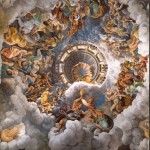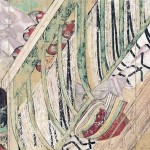by Matthew Slaats
Images have long been a vital tool in the field of Art History as a way of accessing the visual information provided by artists. From the lantern slide to the digital image, they have provided a way of accessing alternative information, conveying something more or different than text. Yet we are moving beyond the image, pulling and twisting visual material to make it more accessible and provide further information. Negotiating and exploring these new boundaries has provided a wealth of experience that is now being used not only in arts but across the humanities and sciences.
In 2006, Vassar College’s Art Department embarked on an initiative to shift from analog to digital material. Lead by the Visual Resources Library (VRL) and Academic Computing Services (ACS), the college took on the sizable challenge of translating the material and supporting the infrastructure used to display the images. This transition was not simply a move from one media type to another, from slide to JPEG, slide projector to Powerpoint, but a revolution in digital literacy as faculty have moved from being media users to being media producers. The result of 4 years has not only been a large collection of images or a faculty that is more savvy with Powerpoint, but a faculty with an increased desire to pursue new forms of media. This is leading us now to discuss the roles that the VRL and ACS play in supporting these new desires and what structures are needed to create dynamic teaching resources.
Here are a few examples of the experiences we have gone through on our path to a new digital world.
Image Collections
A primary question when digitizing images is how they will be stored. At Vassar, our answer has been Luna. Initially chosen because of its usability and presentation functionality, most faculty see it primarily as a repository for material. In recent upgrades, the system provides interesting possibilities for organizing and sharing content with just about anyone. Artstor has similar functionality. Brought to you by the same people involved with Jstor, this collection provides an ever growing resource for digital images along with presentation ability via the web.
The main issue with both these systems is that they don’t do everything you really want them to do. When I say everything, I mean storing various media formats (movies, sound, pdfs, etc). While they are making inroads into these areas, both systems have specific audiences they are trying to reach with very specific needs. In an ideal world, we’d have a system that could store anything, connect with the proper data, and provide unique ways of using that information. Presently, we are looking into new possibilities that would create relational collections for a broad range of material.
Powerpoint and Keynote
Yes, the ongoing battle of Keynote and Powerpoint. Much of this would be based on whether your campus is Mac or PC. At Vassar, we have a mix of both, which keeps us abreast of the constantly shifting changes in the software. My official favorite is Keynote. This is due to its wealth of functionality and its ability to absorb just about anything. Typical of Apple, Keynote is made for using and adapting media with possibilities for removing backgrounds and doing animation. With Office 2010/11, Powerpoint is definitely catching up, specifically with its ability to broadcast and create animation. I’d also note other online tools like Prezi, Google Docs Presentations, and Adobe Connect.
Quicktime VR/Zoomify
The last two things that I want to mention are Quicktime VR and Zoomify. Over the last three years, Vassar has become a hub of panoramic image production. Primarily in support of architectural research being done by professor Andrew Tallon (Link) and Nicholas Adams, we have created a wealth of images that allow for a much further appreciation of space and context in teaching. Serving these through the web and in presentations, this medium provides for a broadening of the experience, allowing students to tangibly access distant places. Our collection will soon be available via a website.
Extending out of this work, we have begun to photograph spaces using Gigapan technology. These extremely high resolution images allow for the documentation of the minutest detail. When accessed through a web page with Zoomify, you are able to pull out detail that most would never be able to see. Here is an example – Center Portal Tympanum at Vézelay.
Conclusion
In all the transition from analog to digital images has provided a wealth of opportunities for engaging in new ways of understanding and experiencing the world around us. No longer are images the sole medium through which teaching takes place, but a starting point that is leading to video, audio and animation. Faculty, Librarians and Academic Computing must be partners in leading down the revolution of image consumption to digital production.





Apple now has Rhapsody as a possible app, the industry great start, however it is currently hampered through the inability to store locally with your ipod, and possesses a dismal 64kbps bit rate. If this changes, then it is going to somewhat negate this advantage for any Zune, although the 10 songs monthly it’s still an important plus in Zune Pass’ favor.